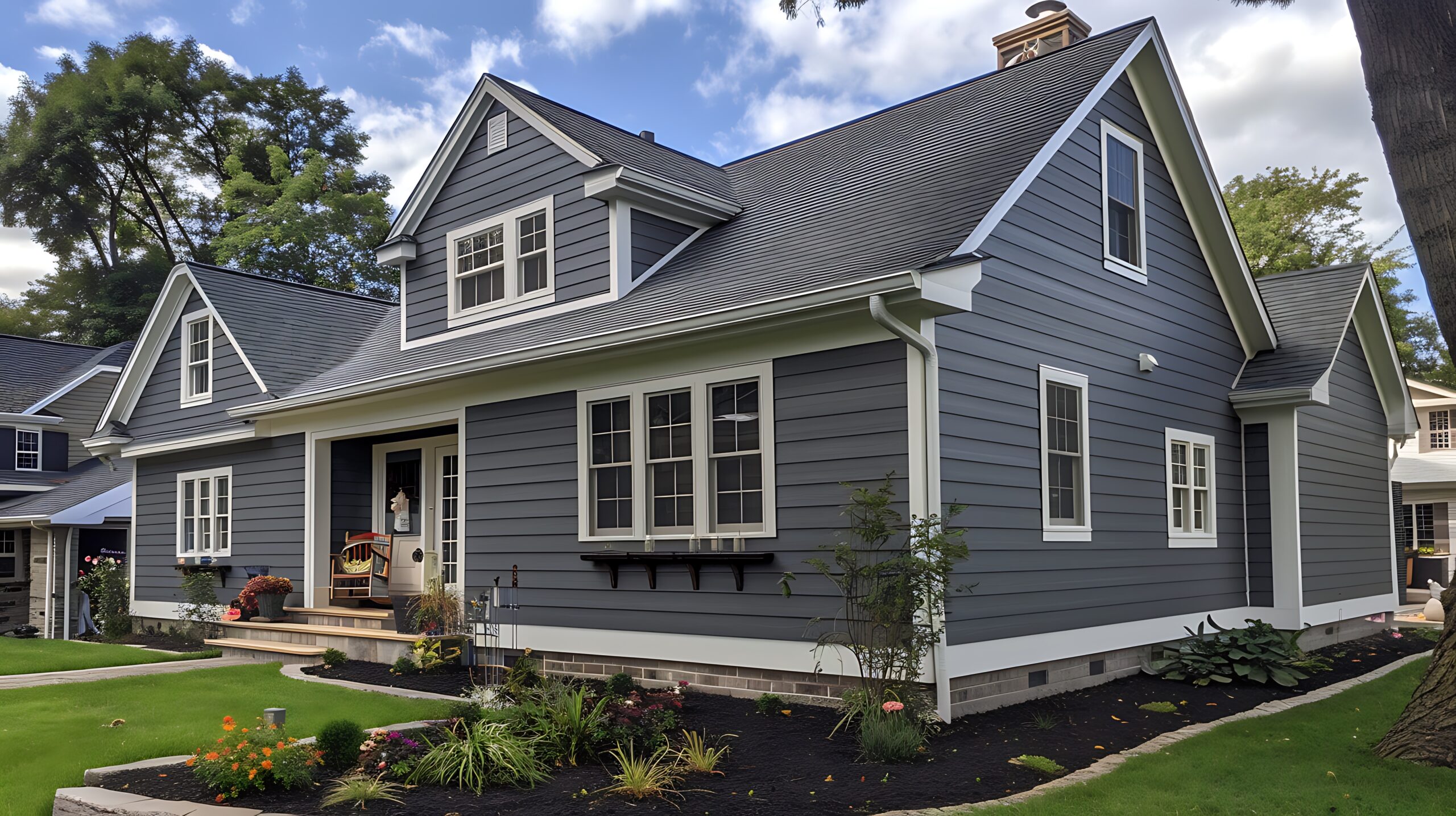Roofing myths are more common than you might think, and falling for them can end up costing you big.
From thinking a leak is a quick DIY fix to assuming your roof only needs attention when things go wrong—these widespread misconceptions can lead to costly mistakes.
Here’s the real deal: staying informed is your secret weapon.
With the right knowledge, you can keep your roof in peak condition, and avoid those surprise repair bills.
Key Takeaways
- Premium materials need skilled installation to ensure durability and performance.
- Routine care helps catch minor issues before they escalate, saving you money in the long run.
- Hidden problems like leaks or structural issues often require a professional eye to detect.
- Know what’s covered and what maintenance is required to keep your warranty valid.
Myth #1: “No Visible Damage Means the Roof Is Good to Go.”
A roof may look perfectly fine from the outside, but that doesn’t mean it’s problem-free. Damage often starts in hard-to-spot areas where issues can go unnoticed for months, or even years.
Hidden Risks to Watch Out For
- Leaks: Water can seep into your roof structure through tiny cracks beneath shingles or hidden corners. This can lead to mold growth, weakening of the materials, and compromised structural issues.
- Deterioration: Roofing materials naturally wear out due to prolonged UV exposure, and intense weather. Shingles or flashing, may crack, or become brittle, leading to increased vulnerability to wind, water, and temperature damage, eventually requiring early roof replacement.
Pro Tip
Regular roof inspections by a professional can catch hidden problems before they become major issues.
Myth #2: “Roof Leaks Are Quick and Easy DIY Fixes.”
It’s tempting to tackle a roof leak as a DIY project, especially when it seems like a small issue. However, leaks are often more complicated than they first appear.
The Risks of DIY Roof Repairs
- Hidden Damage: Water can seep into areas you can’t see. This hidden damage can lead to mold, rot, and weakened structural integrity, which could cost much more to fix down the road.
- Temporary Fixes: A DIY repair may only offer a short-term solution. If the root cause of the leak isn’t addressed, the problem will likely return, potentially causing even more damage.
Pro Tip
By choosing a professional like Worthmann Roofing, you’re investing in the safety and durability of your home, preventing future damage and unnecessary costs.
Myth #3: “Opting for the Lowest-Priced Option Saves You Money.”
Choosing the lowest-priced option might appear cost-effective, but it often brings unforeseen expenses.
Why This Ultimately Costs More
- Shorter Durability: Low-grade materials tend to wear out quicker, so you’ll need to replace them sooner.
- Higher Energy Expenses: Budget roofs often fail to provide adequate insulation, increasing heating or cooling costs.
Pro Tip
Spending more initially on high-quality roofing materials and skilled labor can save you from frequent repairs. In the long run, investing in quality is always a wise decision.
Myth #4: “A Handyman Can Repair a Roof with Standard Materials from a Hardware Store.”
Although your neighborhood handyman might excel at small repairs, roofing requires a professional touch with specialized materials and techniques.
Why It’s Risky
- Material Quality: Cheap roofing materials might not meet professional standards, resulting in quicker wear and tear.
- Installation Precision: Proper roofing requires precise techniques to prevent leaks and weather damage, which skills that a general handyman might lack.
Pro Tip:
Hiring a certified roofer ensures high-quality materials and proper installation, safeguarding your roof’s longevity.
Myth #5: “Paying A Large Sum Upfront Is Standard For Roof Repairs.”
Full payment in advance is not only uncommon, but it can also signal a potential scam.
What to Look for in Payment Terms
- Progress-Based Payments: A trustworthy contractor will divide the payment into stages such as the completion of the initial inspection, delivery of materials, or finishing specific work phases.
- Get It in Writing: A clear contract with outlined payment terms keeps things transparent and protects you from unexpected costs.
Pro Tip
Before agreeing to any roof repair project, verify the contractor’s credentials—license, insurance, and reviews.
Myth #6: “All Roofs Are the Same, So Any Roofer Will Do the Job Right.”
Not all roofing companies offer the same level of service or quality. The materials they use and the craftsmanship involved can vary greatly.
What Matters More
- Reputation and Reviews Matter: Don’t just go by what a roofer says on their website. Instead, check independent reviews or ask for customer referrals. Consistent positive feedback is a good indicator that the roofer knows what they’re doing.
- Look for Certifications: Confirm the roofer has proper licensing and qualifications beyond just a membership.
Pro Tip
Always ask potential roofers for evidence of their work like photos of past jobs, client testimonials, or a list of past projects. A credible roofer will have no problem sharing this information.
If they hesitate, consider it a warning sign to look for someone more transparent and reliable.
Myth #7: “Lifetime Warranties Cover Everything.”
A “lifetime” warranty sounds like it covers your roof for as long as it lasts—but that’s not always the case.
In reality, many “lifetime” warranties come with various exceptions and limitations that could leave you unprotected when you need it most.
Warranty Fine Print
- Exclusions and Limitations: Most warranties exclude damage caused by extreme weather events, or issues related to poor maintenance. Neglect and improper installation, could also be outside of the warranty’s coverage.
- Maintenance Requirements: Some warranties require you to keep up with regular inspections and maintenance to remain valid.
Pro Tip
Keep detailed records of all maintenance, inspections, and repairs you have done to give you the leverage by the time you make a claim.
Myth #8: “Metal Roofs Are Noisy.”
It’s a common myth that metal roofs are loud, especially when it rains. However, modern metal roofs are designed to be quieter than traditional roofing materials.
What Makes Metal Quiet
- Sound-Dampening Insulation: The key to reducing noise from a metal roof is proper insulation. When combined with a high-quality underlayment and attic insulation, a metal roof can absorb and mute the sound of rain, or wind.
- Enhanced Construction Techniques: Modern metal roofs are designed with thicker materials, multi-layered systems, and precision installation that minimize noise.
Pro Tip
To ensure a quiet metal roof, work with a contractor who understands the importance of using soundproofing insulation and proper installation techniques.
Myth #9: “Roofing Work Shouldn’t Be Done in Winter.”
Roofing can be done year-round with the right steps and precautions, even in colder months. Experienced roofers are equipped to handle installations in all seasons.
Weather-Dependent Factors
| Factor | What it means for winter roofing |
| Cold Temperatures | Roofing materials are prone to cracking during winter. However, professional roofers are trained and are using special tools and techniques for proper installation during winter. |
| Freezing Conditions | Cold weather can impact the performance of adhesives and sealants, but roofers often use winter-grade adhesives or sealants that perform well in freezing temperatures. |
Pro Tip
Hiring professionals is a smart move since they are knowledgeable in managing temperature-related challenges and ensure the roof is durable in any season.
Myth #10: “Roof Replacements Are Always Needed After A Storm.”
Just because a storm rolls through doesn’t automatically mean your roof needs replacing. While some storms can cause significant damage, many issues are repairable with targeted fixes.
Common Types of Storm Damage
- Minor Shingle Damage: If only a few shingles are compromised, repairs can be made without tearing off the entire roof.
- Debris Buildup: Storms often leave behind debris like branches, leaves, or even dirt. This buildup can cause leaks, but simply removing the debris can solve the problem without requiring a full roof overhaul.
Pro Tip
Schedule a comprehensive inspection from a certified roofer. They’ll help you determine whether the damage is repairable, allowing you to make informed, cost-effective decisions about your roof’s future.
Get Top-Notch Roofing Services with Worthmann Roofing
Avoid surprises, and keep your home safe! We’re not just here to debunk myths—we’re here to help you protect your home and your wallet.
Reach out to Worthmann Roofing for a comprehensive roof inspection and expert care that will extend your roof’s life. Our team is dedicated to ensuring your roof stays in top condition, no matter the season.
Call us today at (352) 698-4031 to schedule your check-up and give your roof the attention it deserves.



